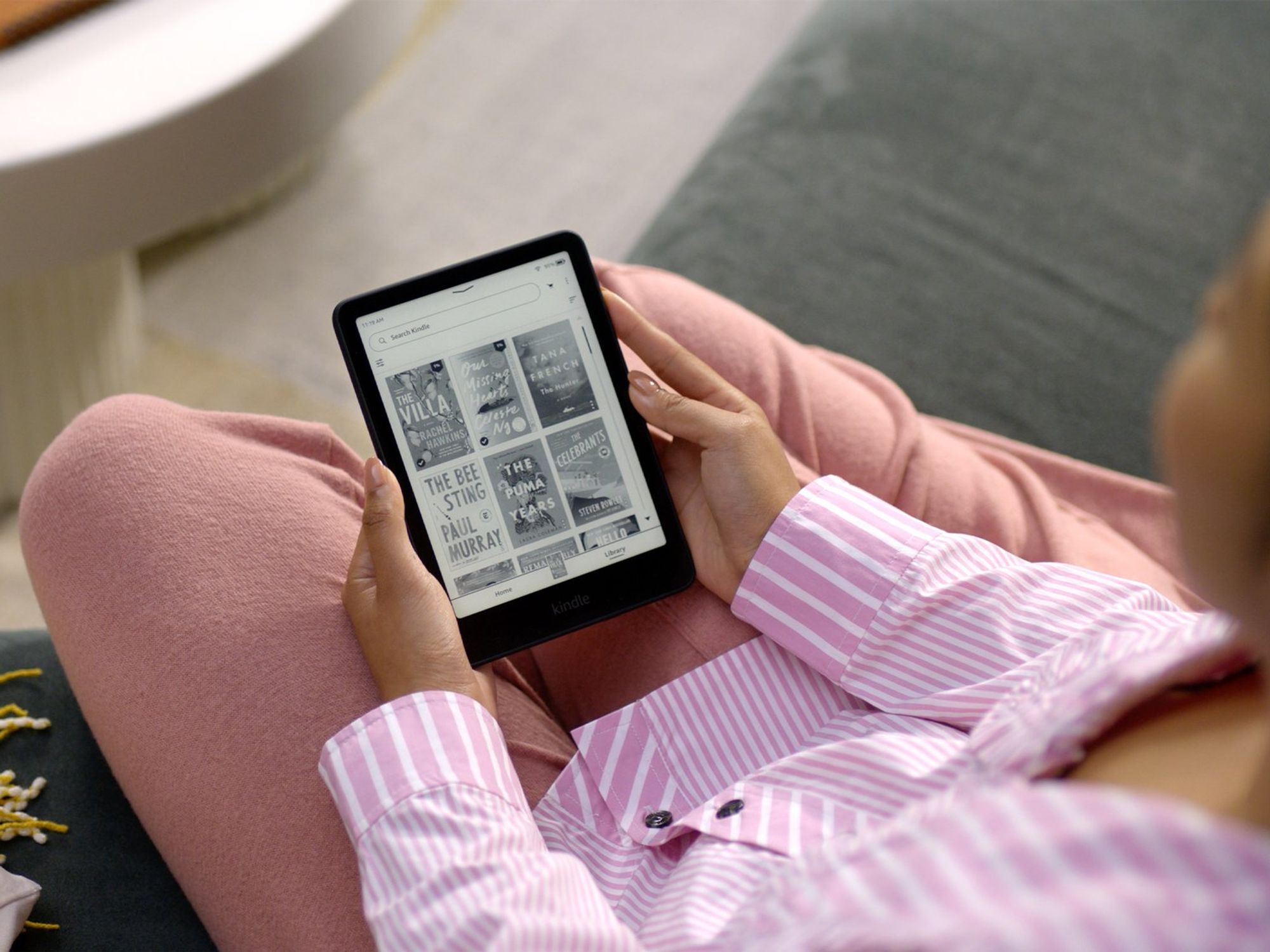Vision Pro could change photography forever, and team at Apple says iPhone users should begin preparing now
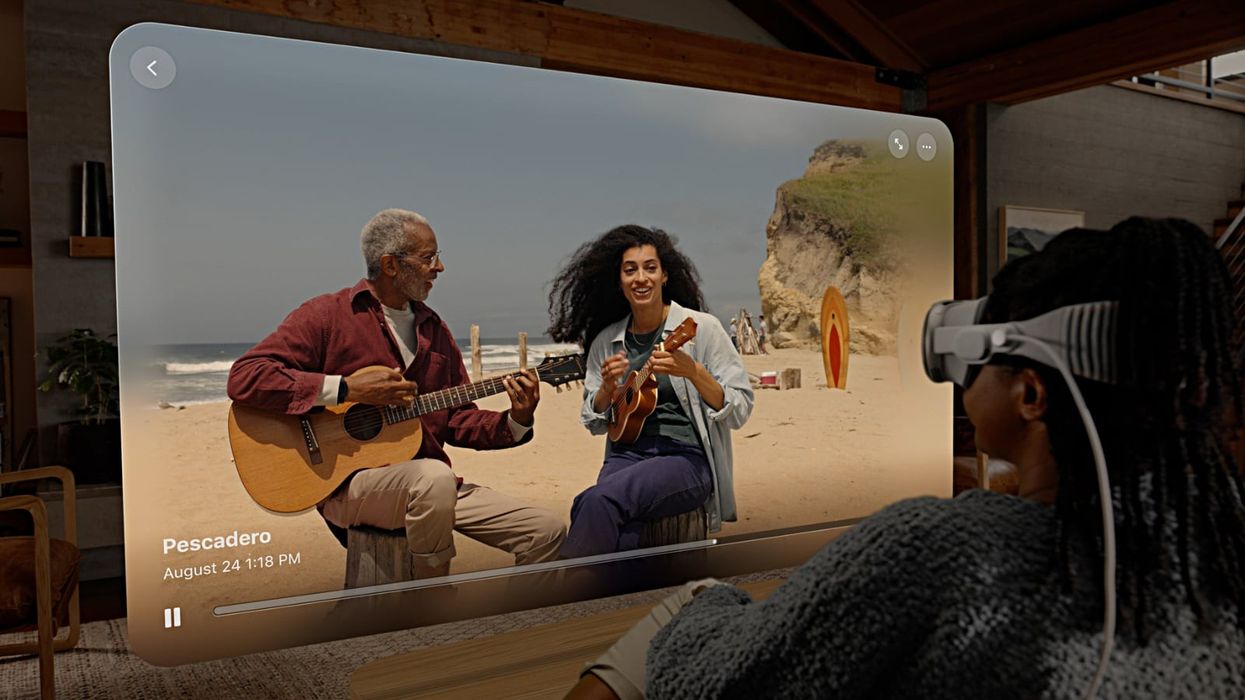
With your entire photo library floating before of your eyes, Vision Pro's clever Spatial Video and Photo format lets you peer around a scene in three-dimensions to recreate memories as you remember them
|APPLE PRESS OFFICE

If you've got a recent iPhone in your pocket, you can start futureproofing clips of your loved ones today
Don't Miss
Most Read
There's a lot packed into the Apple Vision Pro — the iPhone manufacturer's first foray into a major new product category since the introduction of the original Apple Watch almost a decade ago. While a lot has already been written about the innovative eye-tracking, futuristic gesture controls, and immersive environments, it's the way Apple Vision Pro impacts how we experience our memories that could prove to be its true legacy.
At £3,499, this first-generation Vision Pro won't sell in the same quantities as other recent hits from Apple — like AirPods or Apple Watch — but it's already having a profound impact. Millions of people have already upgraded to iPhone 16, 16 Plus, iPhone 16 Pro, and 16 Pro Max, which were redesigned to accommodate dual-cameras capable of capturing Spatial Content.
This new format was created by engineers at Apple so you can relive videos and photos in three dimensions when wearing the Apple Vision Pro. Starting now, iPhone owners across the world can capture videos and photos with data to allow them to experience these moments like "a time machine," as a member of the secretive Apple Design Team tells GBN in a discussion about the Vision Pro.
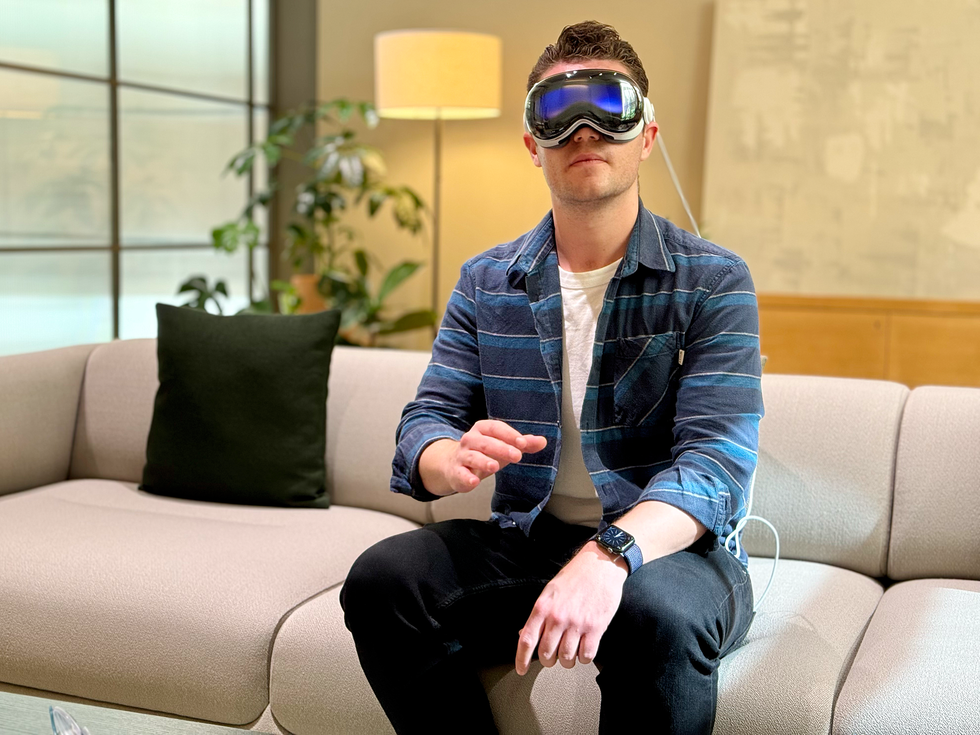
GB News Technology Editor Aaron Brown experiencing the Apple Vision Pro for the first time
| GBNWhat is Apple Vision Pro?
For those who missed the announcement of the Vision Pro, Apple describes this new device as its first "Spatial Computer," since it blends elements of Augmented Reality (AR) and Virtual Reality (VR) — all powered by the same M2 chipset found inside its £999 MacBook Air laptop.
Yes, Vision Pro is equipped with the same amount of processing power as a traditional computer, but using this immersive gadget is nothing like a standard laptop or desktop PC. Unlike some of its rivals, Apple Vision Pro doesn't ship with controllers. Instead, a dozen high-resolution cameras, six microphones, and five sensors dotted around the device track eye movement and hand gestures to control every aspect of this face-worn computer.
The headworn device, launched on July 12 in the UK, works independently of any other Apple device — unlike an Apple Watch, which requires you to own an iPhone.
Vision Pro lets you watch your favourite films or television series from the front-row of a virtual cinema, on the white sands of a beach in Bora Bora, or nestled amongst the snow-capped peaks in Yosemite National Park. If you don't want to be completely immersed in a virtual environment, you can position the screen in your real-world surroundings — with the latest must-watch show from Disney+, Apple TV+, and most recently, Channel 4, beamed onto your wall.
You can also use Vision Pro to play classic games like Solitaire, Backgammon, Checkers, and Chess across the table from friends and family on the other side of the planet, sit courtside at an NBA basketball match, watch an intimate performance from artists like Alicia Keys and The Weeknd from a money-can't-buy seat in the recording studio, explore the depths of the Solar System, or beam the contents of your MacBook to a vast IMAX-like screen.
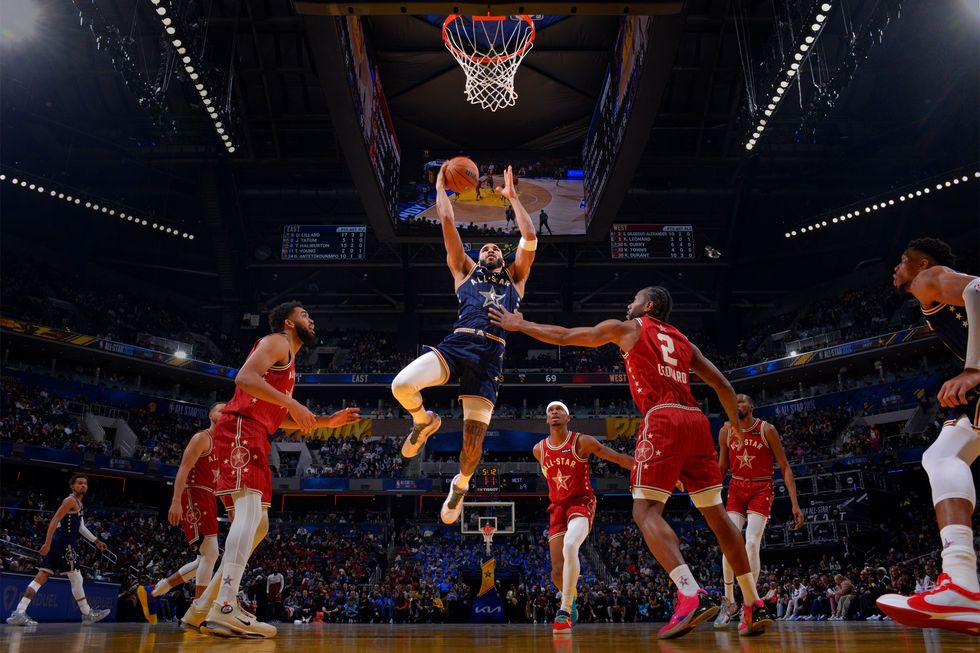
Apple has filmed part of the 2024 NBA All-Star Weekend with immersive cameras that let you watch from a courtside seat — and in money-can't-buy seats, like directly below the net
|APPLE PRESS OFFICE
Vision Pro relies on two cutting-edge micro-OLED displays — each the size of a Royal Mail stamp — packed with 23 million pixels to make all of this possible. To squeeze the same number of pixels as a 4K TV into each display, the engineers had to shrink each pixel to the size of a human red blood cell.
All of this work is to ensure that text looks crisp, photos are true-to-life, and the immersive 3D cinema experience earned lavish praise from Avatar writer-director James Cameron, who described using the Vision Pro to watch this blockbuster at home as a "religious" experience.
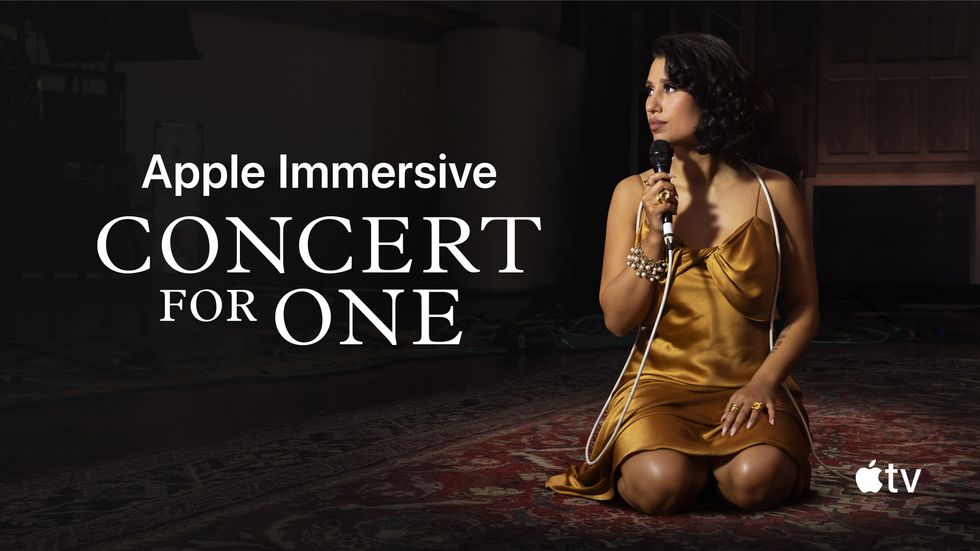
Apple has filmed a new series, dubbed Concert For One, that's designed to offer an intimate experience of watching your favourite artists perform in the recording studio. Alicia Keys and The Weeknd have already collaborated with the Californian technology firm, with an immersive film with Raye due to be released late November
|APPLE PRESS OFFICE
'The Next Frontier Of Photography'
GBN had the opportunity to sit down with Billy Sorrentino, who works within the secretive Apple Design Team, and Della Huff, who leads product management for Photos and Camera software at the firm, to discuss how Apple Vision Pro will add a new dimension to how we experience photography.
Apple Vision Pro has always had the ability to capture spatial photos and videos using its onboard cameras, but now, anyone with an iPhone 15 Pro, 15 Pro Max, iPhone 16, 16 Plus, iPhone 16 Pro, or 16 Pro Max in their pocket can shoot in this immersive format.
Not only that, but the arrival of visionOS 2 — the first major operating system update for the Apple Vision Pro — means any photo can be transformed into the Spatial format with a single tap, bringing natural-looking depth and dimension.
And we really do mean any photo.
Shots from older iPhone models, point-and-shoot digital cameras, SLRs, and even images from history, like the iconic photograph of Abraham Lincoln from 1860 or the 1932 shot of workmen eating their lunch on a steel beam at the top of the Rockefeller Center, are all fair game.
"We think Spatial is kind of the next frontier of photography. And it's not very often that we get to really push the limits of what photography and videography truly is," Della Huff tells GBN. "All of us who have been able to work on this project are so inspired by that — giving people a new dimension in how they can record their memories and relive them.
"We think Spatial is going to be huge for the folks who are the memory makers. I'm a mom, I want to capture these Spatial moments of my kid so that I can relive them in the same way that I experienced them."
Using VisionOS 2 to transform any photo into Apple's new Spatial Format
If you haven't captured many moments in this new Spatial format, then the AI smarts baked into visionOS 2 will do a lot of the heavy-lifting for now. Della Huff describes using this feature to bring a still photo of her childhood home, which is no longer standing, back to life in her memory.
"I looked at photos of my childhood home, which doesn't exist anymore because it was torn down, and it's like being transported right back to that lawn. It's just absolutely wild and very emotional to be able to go back and experience memories that you thought were flat forever — but not with the Create Spatial feature in visionOS."
We had the opportunity to experience Spatial Video during our first demo with the Apple Vision Pro.
It was a brief clip looking across the table at a family blowing out candles on a birthday cake — with smoke suddenly swirling around us and the decorative bunting stretching into the distance well beyond the physical space where we were actually seated should've allowed. It was immersive and emotive ...and more than a little like living in the future predicted by Steven Spielberg's Minority Report.
Photos offer the same experience, albeit with a single freeze-frame moment in time. Moving and tilting your head highlights the depth and a parallax effect, offering a new dimension to your photography that's much closer to what it was like to experience the moment first time around.
We were able to view Spatial Photos captured on the latest generation of iPhone as well as those transformed into the format using AI after the fact.
When you've used the onboard AI to transform an image from your library into this new Spatial format, it will be stored in a dedicated tab within the Photos app alongside native Spatial videos and photos. This lets you browse through dozens of memories — peering into the frame like the portraits in the Harry Potter films.
With recent memories, Spatial is a fun new twist... with older photographs, it can be an emotional gut-punch.
Spatial Video example used in free Vision Pro demo in Apple Stores worldwide
Apple has sensibly swerved the temptation to make prominent objects lurch out of the frame, like The Polar Express and other films that released during the post-Avatar renaissance of 3D in cinemas in the late 00s.
It's a magical experience that feels so natural it belies how many complicated processes are required to make it a reality. According to Billy Sorrentino, it was a company-wide effort to bring Spatial Photos and Videos to life.
"Spatial capture was a fundamental feature that we knew from the very beginning of creating Vision Pro right," he tells GBN during our conversation. "That was something that we had an inkling of early on and many, many teams across Apple really leaned in to help make this work.
"When you unpack it, it's really interesting, you've got the disparity between two cameras, and then that plays back into your two eyes — and it's your brain making it Spatial. It's such an interesting way to have something truly feel like a memory because you're playing back something in the same way you experience real-life, as opposed to a CG created scene, or other kinds of 3D effects.
"It's just two camera lenses going into your two eyes. It is very natural."
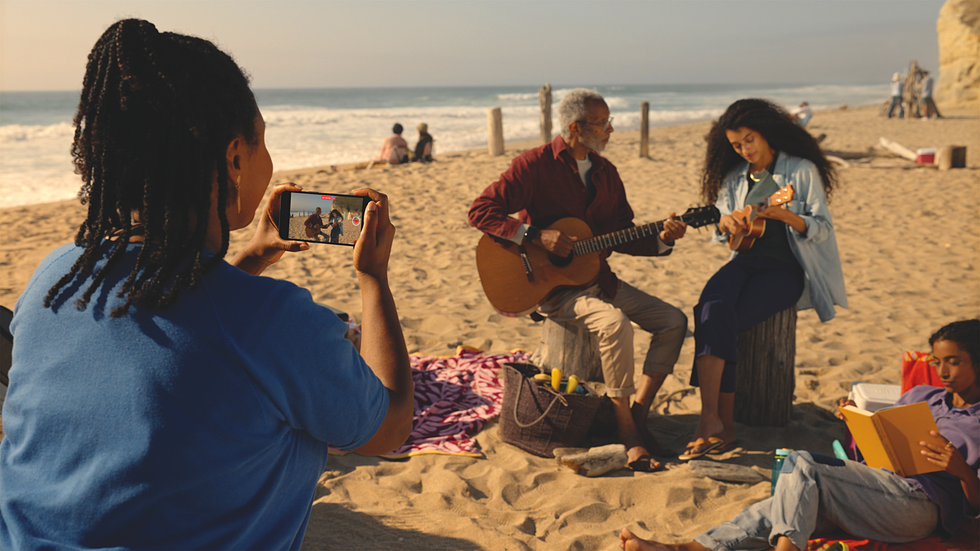
Filming in Spatial Video will use a little more storage on your iPhone, and in any subsequent iCloud backups, but will future-proof your family films with the depth data needed to enjoy on the Vision Pro... or any future devices in the Apple Vision lineup
|APPLE PRESS OFFICE
Della Huff, who studied human memory as part of a college major in Psychology, says witnessing Spatial Video and Spatial Photos for the first time was "a lightbulb moment".
"That's how your brain encodes memory," she explains to GBN. "When you go back and you think about something that happened five minutes ago or 20 years ago, you're not thinking of a still 2D image or a flat video.
"Your memories are spatial and that's why [the Spatial format on Vision Pro] is so evocative. It really triggers your brain and those neural pathways light up. When it's not your content, some people have told us that it's a little strange — like peering into someone else's memory. But when it's your own content, it really is mind-blowing because it's like being transported right back to that moment as you lived it."
If you want to experience Spatial Video and Spatial Photos, including the example with birthday candles that we experienced, you can book a free demo with the Vision Pro in any of Apple's 40 shops nationwide in the UK. You'll be able to wear the Vision Pro and experience its headline features in a crash course that takes roughly 30 minutes.
There's no obligation to buy, so it's well worth checking availability. It truly needs to be experienced to believe.
Even if you don't own a Vision Pro — or plan on buying this first-generation Spatial Computer, Billy Sorrentino firmly believes that shooting videos and photos in Spatial is a worthwhile investment in the future.
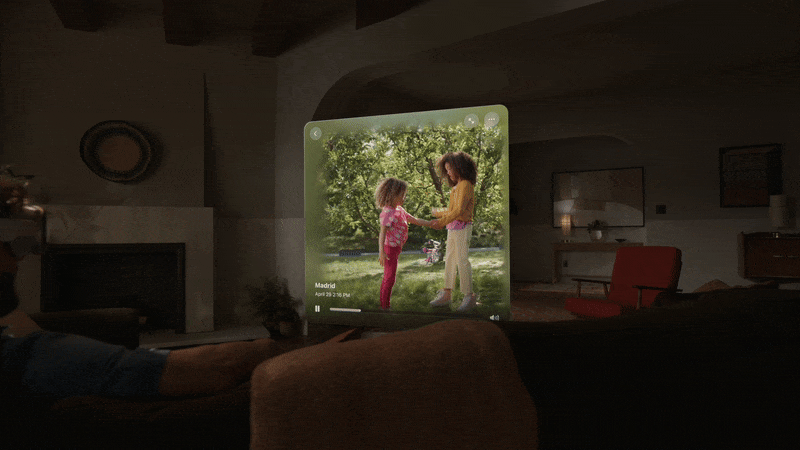
Anyone with an iPhone 15 Pro, 15 Pro Max, or any of the newly-launched iPhone 16 or 16 Pro range can capture Spatial Video with all of the depth information needed to relive these moments in a futuristic three-dimensional video on an Apple Vision Pro at some point in the future
|APPLE PRESS OFFICE
Depth data isn't captured by default when you take a photo on your iPhone, instead you'll need to scroll through the carousel in the Camera app and select Spatial. It only works when you hold your iPhone in a landscape orientation, so the two lens are positioned horizontally, like your eyes.
These files typically use a little more storage too.
"We're really excited now that it's come to the iPhone 16 lineup, because while Vision Pro has an amazing capture experience itself, nothing is more powerful than the camera that's on you.
"As we're rushing through life and all the different trips, adventures, and things we do, we're not ignorant enough to think that folks have their Vision Pro everywhere they go. But you most likely do have your iPhone in your pocket," Billy Sorrentino explains.
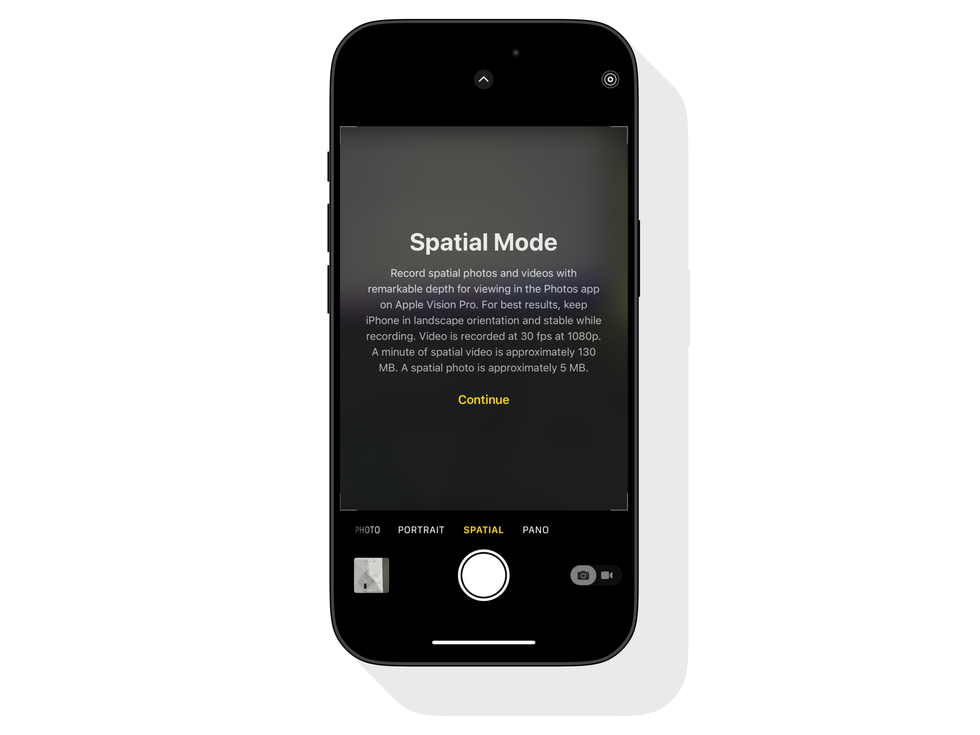
Swipe through the carousel of options in the Camera app on iPhone 15 Pro, 16, 16 Pro and you'll find Spatial between Portrait and Panorama. This captures the depth-data needed to peer inside the footage in three-dimensions when relived on Vision Pro
|APPLE PRESS OFFICE | GBN
"Capturing those Spatial experiences, there's really no downside — because if you've got a Vision Pro, [Spatial Videos] will play back in stereo and you'll have this immersive version. But if not, it plays back as a traditional video."
Sorrentino adds: "The way we think about it experientially is, as you're going through life and you're seeing these moments that really feel like you want to capture the essence of that moment, rather than the artifact of a photograph, being able to go to Spatial and shooting that as a Spatial Video or Spatial Photo.
"Really, there's no downside. If anything, you're investing in the future."
"I would totally echo that," Della Huff tells us. "The teams thought about that a lot and wanted to make sure that there were next to no trade offs when you're choosing to capture in Spatial because, let's face it, most of the world is still on these 2D platforms — and that's totally fine.
"When you capture a Spatial Video or a Spatial Photo, you can share that just like you would any other video or photo that you'd capture, but you've preserved that Spatial moment too, so that you're future-proofing that content.
"Even if you don't have a Vision Pro today, but you have an iPhone 15 Pro, or an iPhone 16 or 16 Pro, you can be capturing these moments in Spatial and building up that library, so that sometime in the future you can enjoy them spatially."
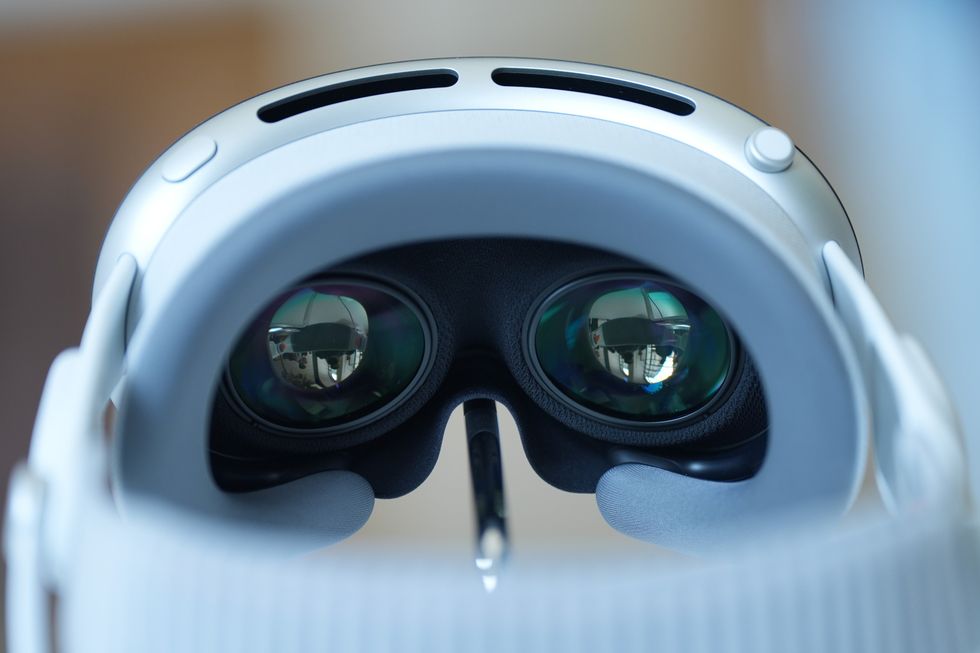 Vision Pro is equipped with ludicrously high-resolution displays — with some 23 million pixels shared between two screens the size of Royal Mail stamps — and processes images on-screen 8x faster than the blink of an eye | PRESS ASSOCIATION
Vision Pro is equipped with ludicrously high-resolution displays — with some 23 million pixels shared between two screens the size of Royal Mail stamps — and processes images on-screen 8x faster than the blink of an eye | PRESS ASSOCIATION If that sounds familiar, it's likely because we've seen Apple take the same approach with other new additions to its Camera, like the introduction of Live Photos with the iPhone 6S in September 2018. This captures a short snippet of video before and after you pressed the shutter button.
This footage can be used to pick a different key photo — to capture the exact moment you wanted to immortalise, add a fun effect, like an endlessly looping animation, or a long exposure that blurs moving elements in the scene. Over time, Apple has expanded where Live Photos appear.
The redesigned Photos app that rolled-out in iOS 18 will preview flashes of this video on the cover of albums.
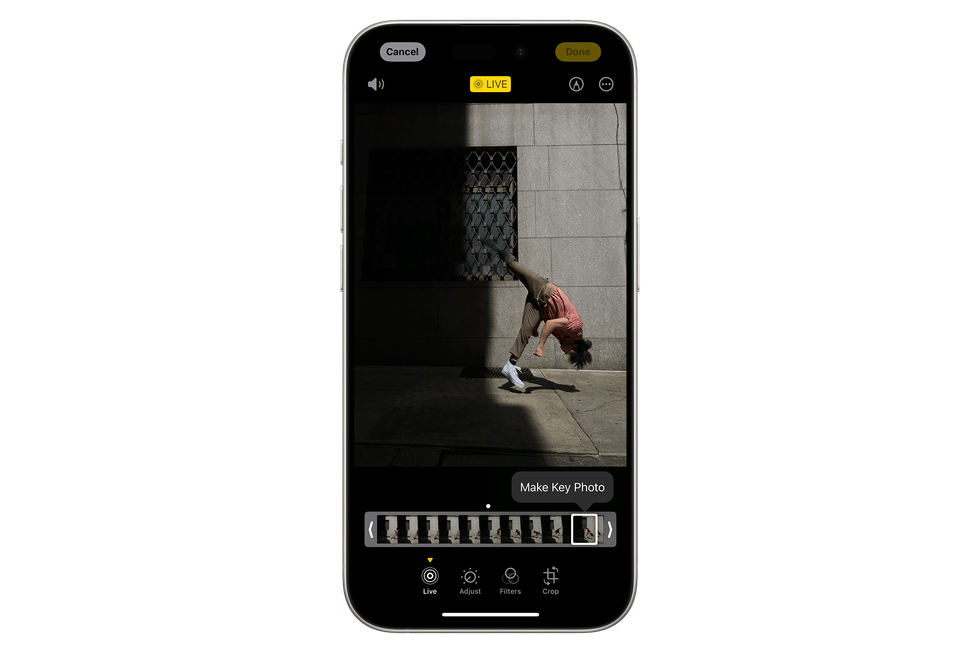
The introduction of Spatial Videos and Photos bares a lot of similarities with Live Photos — a format that was introduced almost a decade ago on iPhone, and is now incorporated into dozens of places across the Apple ecosystem, including watch faces on the Apple Watch, Memories in the Photos app, and more
|APPLE PRESS OFFICE
You can also use Live Photos to add a flurry of movement to watch faces on the Apple Watch. Developers have also capitalised on the format, with the GoPro app enabling you to add the video captured in the background when you capture a Live Photo into your timeline — handy if you're short on footage.
"We hear from customers all the time that they're so grateful they've been capturing Live Photos," Della Huff tells us. "Maybe a family member suddenly passes and they thought they'd never hear their voice again — and they've got their laugh, they've got their voice recorded in these Live Photos photos.
"I always think it's best practice to capture as much data as you can because life is precious and fleeting, and the more data you have, the more memories you'll be able to relive."
Spatial offers a new way to be transported back to the second you pressed the shutter button. Billy Sorrentino is aware of the responsibility when capturing these memories. He describes the internal debates during the development of this feature, when the Vision Pro team was focused how to make this spatial content feel real.
"How does this become a time machine?," he says was a question the team asked itself: "That felt so much more compelling, natural, and frankly, more of an Apple approach."
The Responsibility Of Coding Memories
Apple might be using Artificial Intelligence to add depth to photographs that weren't captured in the Spatial format, but the Californian company is adamant not to meddle too much with the original shot.
It's an approach that also informs how Apple Intelligence will interact with photography. When these features release in the UK next month, Apple will let you erase an unwanted object or person from the background, but has stopped short of allowing users to insert objects and people into the frame who were never really there.
Della Huff succinctly sums up Apple's philosophy: "Our goal is always going to be authenticity to the original moment. That's our highest level goal for anything we do with photography and videography."
Browsing through your photos can also be a social activity — sharing memories of a recent holiday or children's footsteps with family members and friends.
While Vision Pro does a convincing job of making it seem like its apps really are surrounding you in the real world (windows cast shadows on the floor, for example) it's not possible for the person beside you to see the immersive three-dimensional video you're reliving.
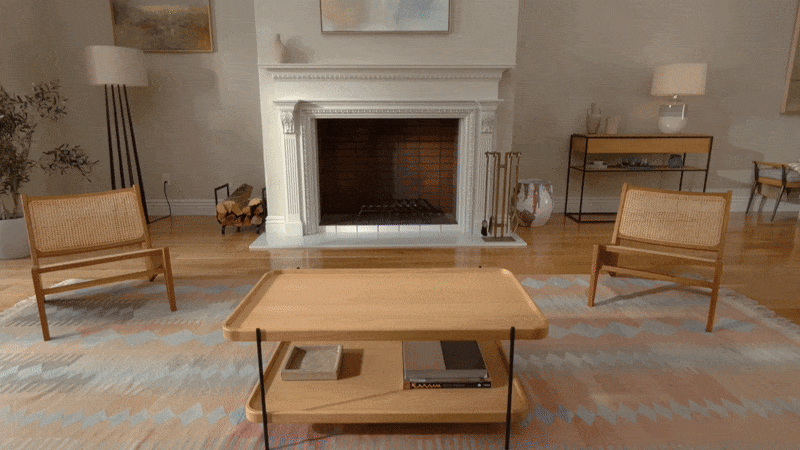
Icons, applications, and other virtual elements conjured-up by the Apple Vision Pro cast shadows on tables, flooring and other furniture in your surroundings — making it feel as if they're really there
|APPLE PRESS OFFICE
But the team at Apple worked hard to ensure to connect people who aren't able to gather around an iPad to relive photos or videos together. Multiple Vision Pro owners can watch movies together, play games, or browse through photos in a virtual space.
Billy Sorrentino tells GBN: "We're a big believer in Spatial truth, which means that if we all got on a Spatial FaceTime right now, we'd be sitting naturally around each other. And if you got up and walked away in whatever direction in your room, we're going to watch you walk away. We can't hit a button to make you come back.
"You have to come back to us."
Sharing photos and videos from your library in a Spatial FaceTime call
This is designed to break down barriers to immersive and use technology to recreate the simple act of gathering with friends and family in the same room.
This works across a number of the Vision Pro's biggest features.
"If you're watching a movie together in the cinema [virtual environment] in Vision Pro with a friend or family member, they'd be sitting right next to you in that theatre. So as you look to your right, they look to their left — you're talking to each other and you're watching the film. And with SharePlay in Photos, that is the same as anything else with traditional Spatial media, which means wherever we've started our conversation — the shared window is right inbetween us."
Billy Sorrentino shares a personal example of using this technology: "My father, who is a little bit older, has a Vision Pro. I have been shooting my daughter do her ballet in every room to Taylor Swift with my iPhone, and send it to him. And then we are both watching the shared video of my daughter. And it's amazing watching my dad — her grandfather — watch my kid dance as if he's there, but he's 3,000 miles away."
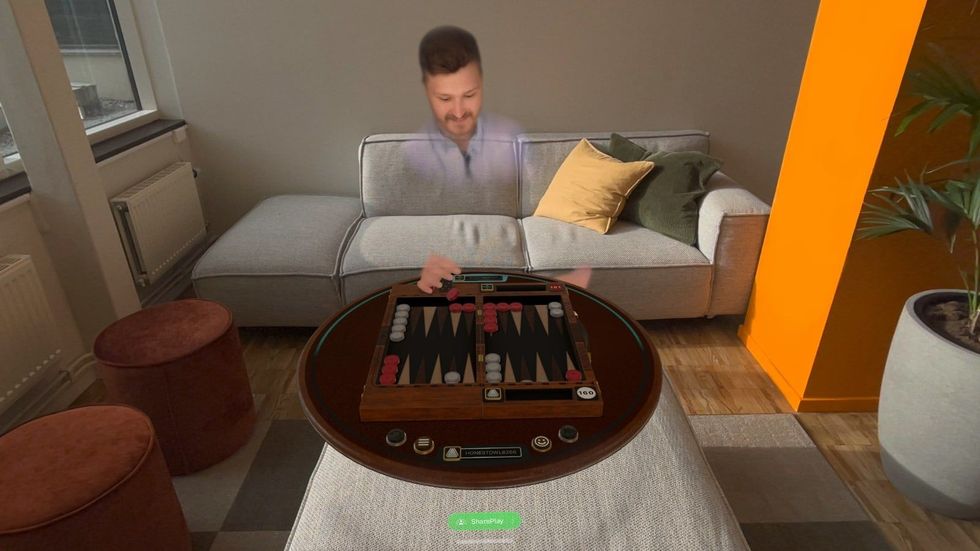
Game Room, which is available as part of an Apple Arcade subscription, lets you play a raft of traditional board, card, and dice games with people anywhere on the planet on a table. If someone in your group doesn't have a Vision Pro, they can join with an iPhone or iPad too
|APPLE PRESS OFFICE
Using the third-party app Game Room, Billy Sorrentino describes sitting across from his father — despite the vast distance separating them in real-life — to play Checkers and Solitaire on a virtual table.
Changing how we relive our memories, shoot videos of our loved ones, or share photos and videos with friends and family to this new Spatial format won't happen overnight.
Mr Sorrentino tells us: "We understand this is going to take some time, because we need to have enough Vision Pro out in the world to have this be as powerful as we hope."
Looking Ahead
This all-new device is less than a year old and still very much in its infancy, but Della Huff says the early reaction to Spatial Videos and Spatial Photos has been incredible.
"One thing that we hoped for — but I've been blown away by the response — is just how emotionally resonant it is. Giving folks demos, you see people like start to tear up and it's not even their content. It's a total honour to be able to be part of this team that's changing photography."
And the biggest frustration?
"Seeing is believing and Vision Pro is not in everybody's hands today," Billy Sorrentino concludes. "We try to tell as many folks as possible: 'Get into an Apple Store,' because the demo is the easiest way to get your head around seeing this. No matter how expressive we are — it's not going to do it justice."
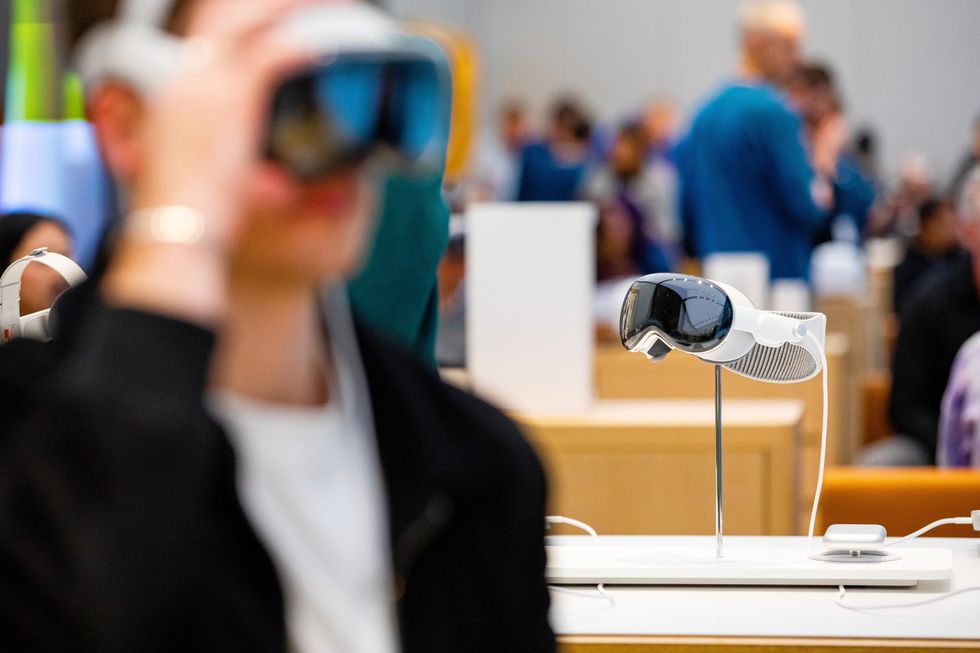
Anyone can now experience the Apple Vision Pro in a free demo in 40 Apple Store locations across the UK
| GETTY IMAGESAnybody can book a free demo in an Apple Store to experience Spatial Video, Spatial Photos, and everything else Vision Pro is capable of. The 30-minute demonstration is free. If you need glasses, Apple Store employees will even be able to customise the Vision Pro with Zeiss lenses matched to your prescription.






